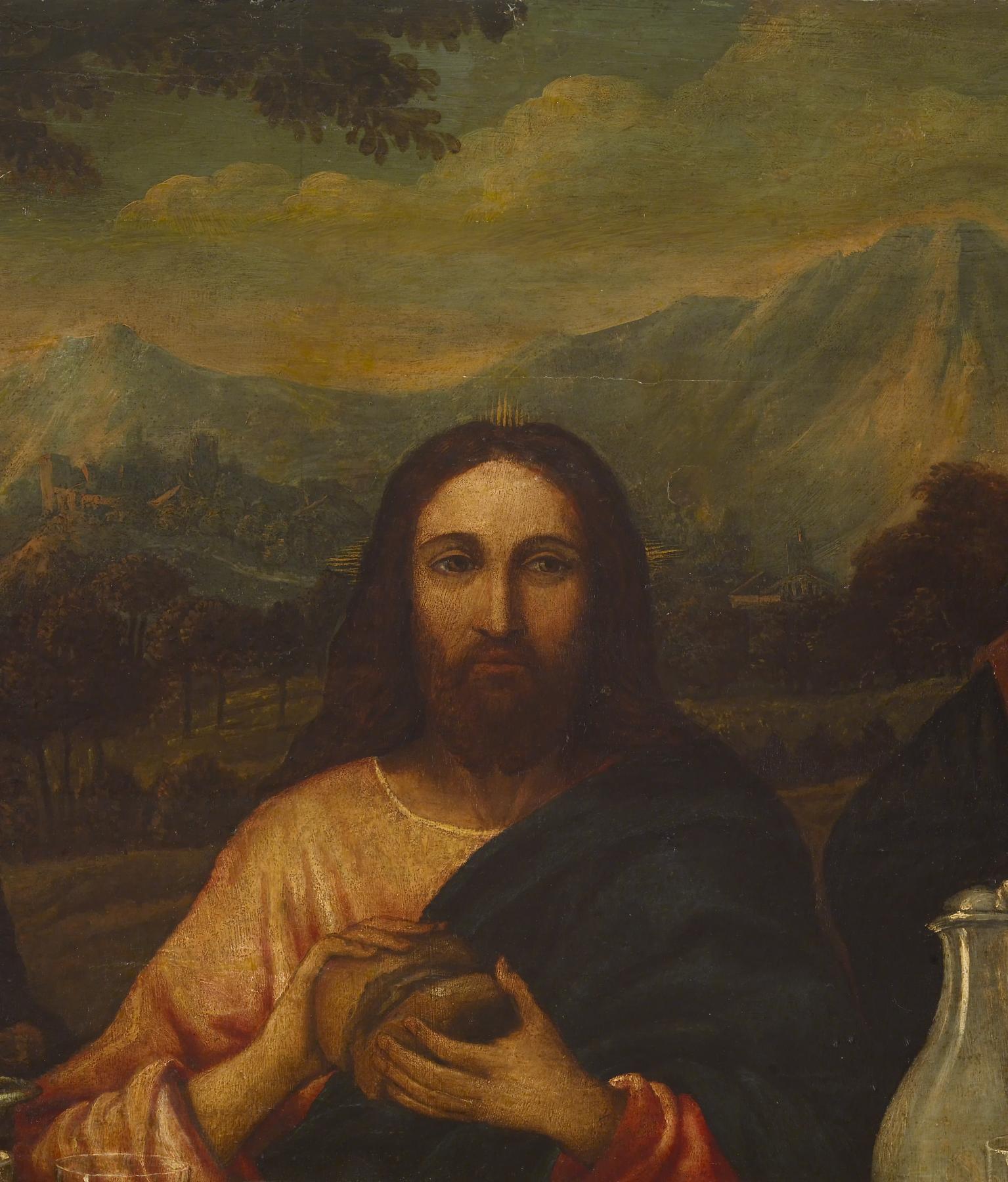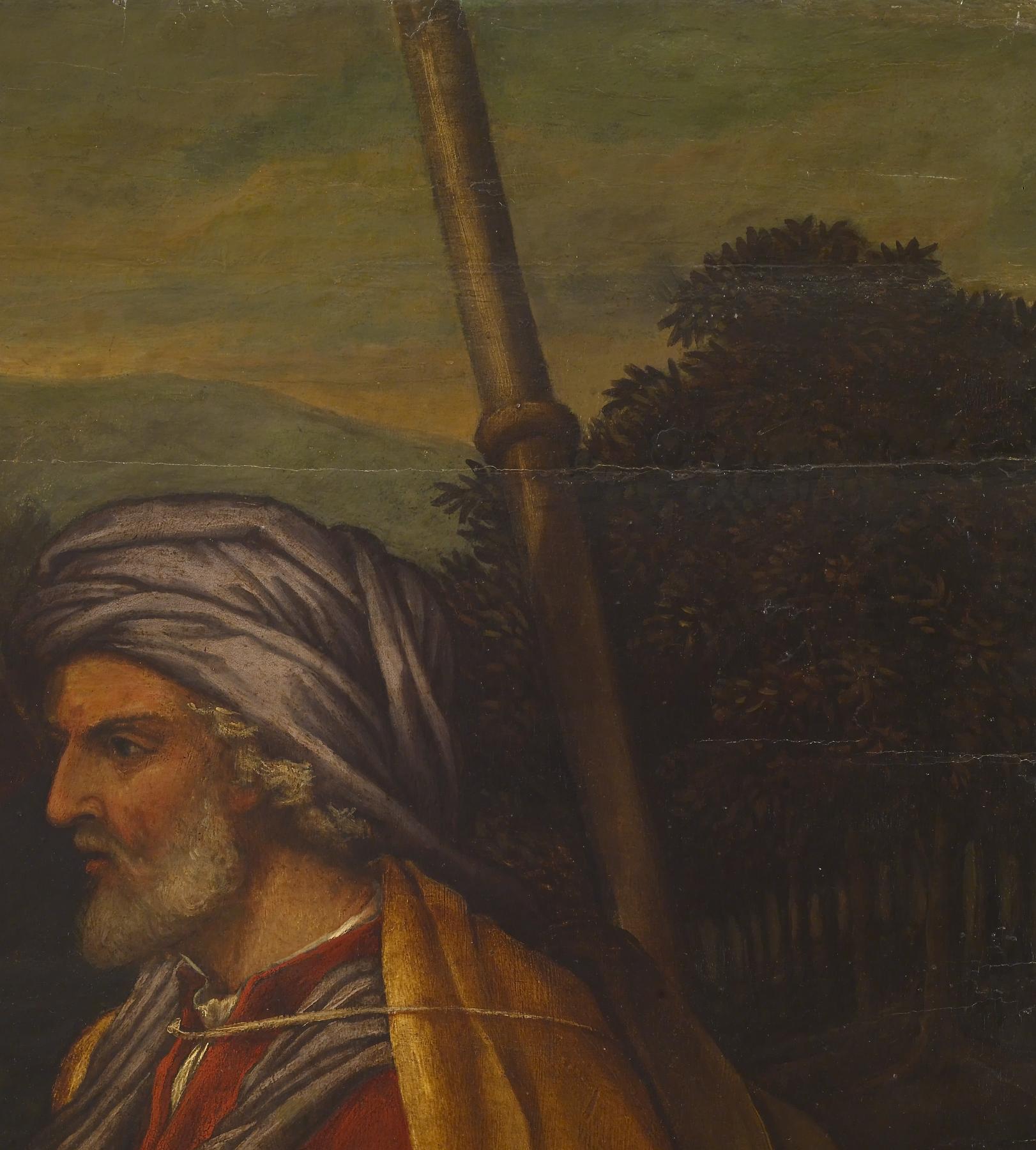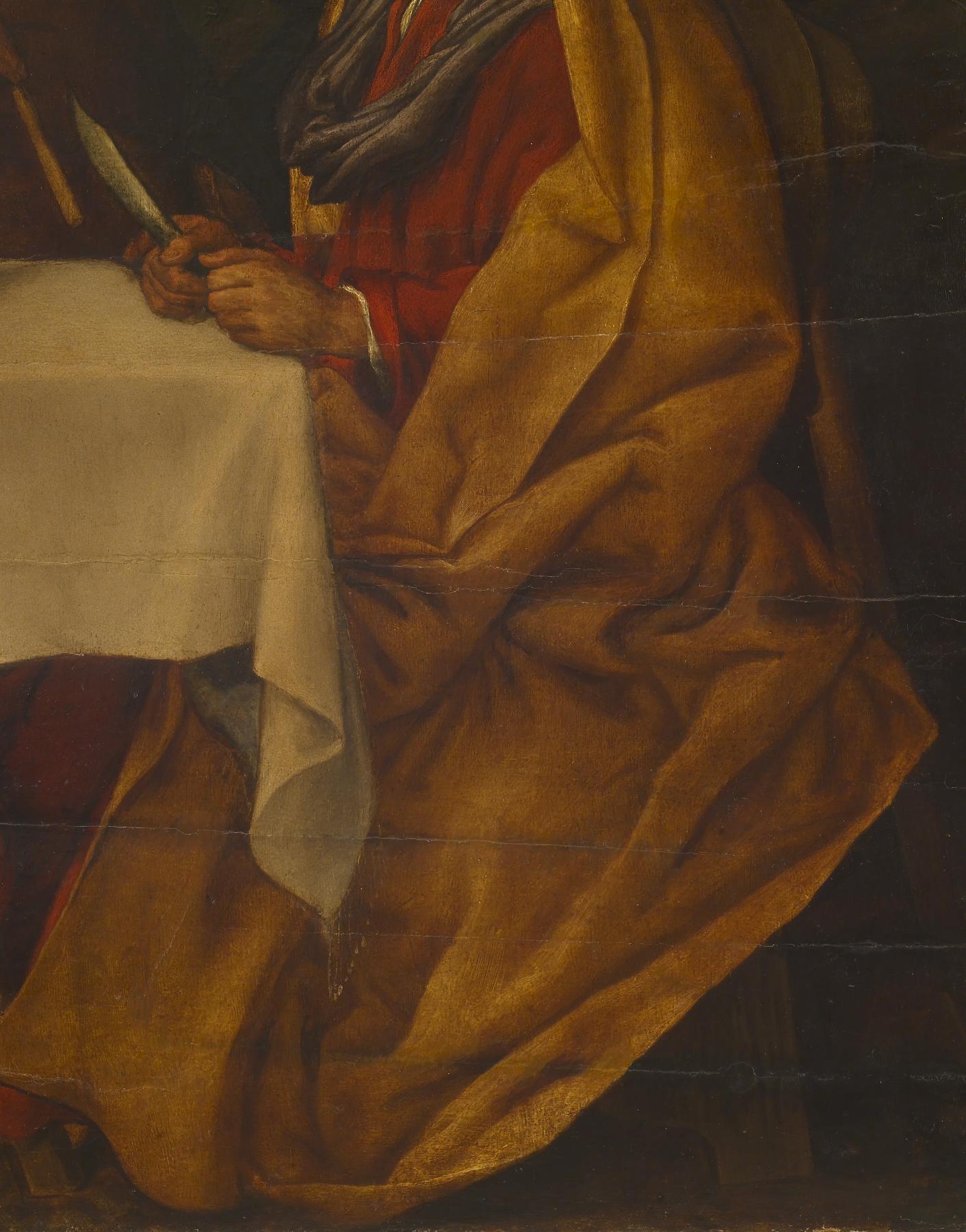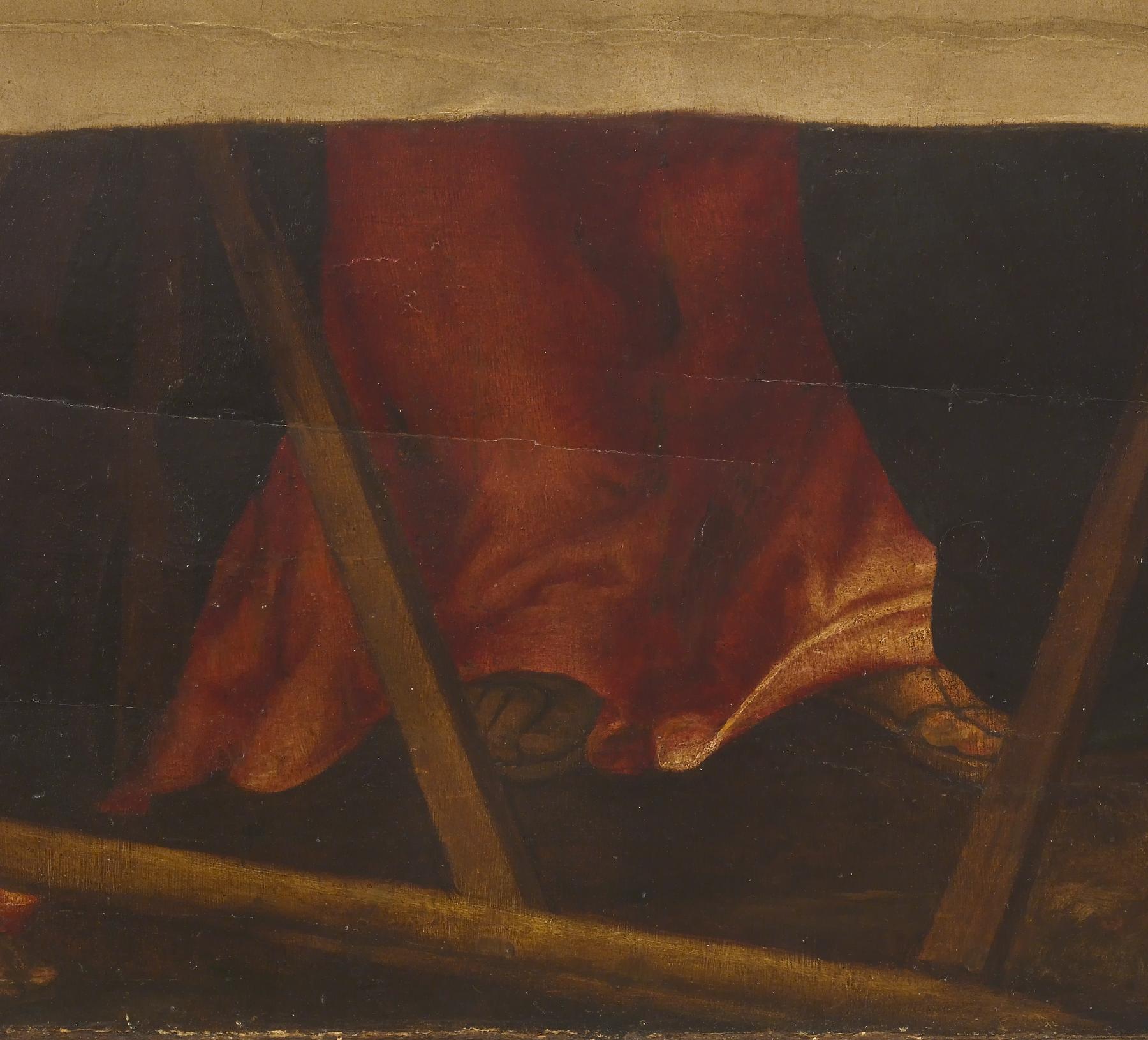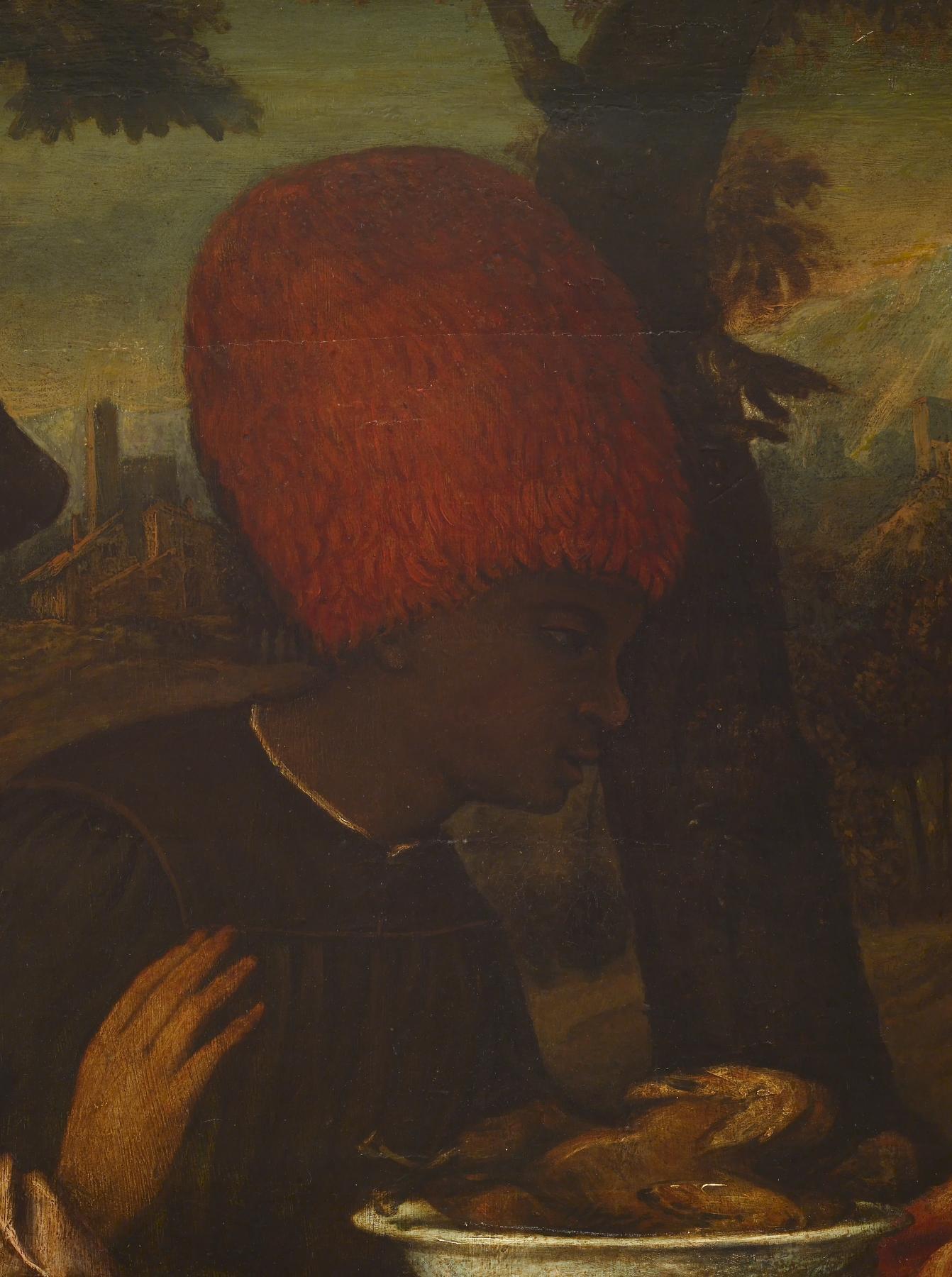Supper at Emmaus
(Renaissance Europe )
According to the Gospel of Luke in the Christian New Testament, Christ appeared after he rose from the dead to two of his disciples walking toward the town of Emmaus. The disciples did not immediately recognize the stranger. This painting—and all representations of this subject—captures the moment when the disciples realize that the stranger who “breaks bread” with them is Christ. Although the biblical story does not mention all the people represented in this painting, the disciples are identified by their walking staffs, and the standing man is the innkeeper.
Artists often included a serving man in scenes of the supper at Emmaus, but depicting the server as Black was quite rare. His red headdress is a zamt, worn by Egyptian military personnel in the 1500s; given there is no narrative reason to include a specifically Egyptian figure in the scene, the artist may have introduced the figure just to create pictorial flair. Rarer still is the representation of a Black man as participating directly in the drama of Christ’s revelation, and the artist skillfully shows the figure as fully recognizing Christ—he reverently falls to his knees (see his bent ankle at the left).
See the brief discussion of the painting in J. Spicer, ed., Revealing the African Presence in Renaissance Europe. Baltimore: Walters Art Museum, 2012, no. 25.
Provenance
Provenance (from the French provenir, 'to come from/forth') is the chronology of the ownership, custody, or location of a historical object. Learn more about provenance at the Walters.
William T. / Henry Walters Collection, Baltimore, prior to 1909 [mode of acquisition unknown]; Walters Art Museum, 1931, by bequest.
Exhibitions
| 2012-2013 | Revealing the African Presence in Renaissance Europe. The Walters Art Museum, Baltimore; Princeton University Art Museum, Princeton. |
Conservation
| Date | Description | Narrative |
|---|---|---|
| 2/14/1958 | Treatment | other |
| 8/7/2009 | Examination | examined for condition; examined for loan |
| 4/20/2011 | Examination | examined for condition |
| 5/1/2011 | Treatment | other |
Geographies
Italy, Venice (Place of Origin)
Measurements
Painted surface H: 37 7/8 x W: 61 7/8 in. (96.2 x 157.2 cm)
Panel H: 38 1/8 x W: 62 3/8 x D excluding cradle:1/2 in. (96.8 x 158.5 x 1.2 cm)
Frame H: 68 1/16 x W: 87 5/16 x D: 7 1/16 in. (172.9 x 221.7 x 18 cm)
Credit Line
Acquired by William T. or Henry Walters, before 1909
Location in Museum
Accession Number
In libraries, galleries, museums, and archives, an accession number is a unique identifier assigned to each object in the collection.
In libraries, galleries, museums, and archives, an accession number is a unique identifier assigned to each object in the collection.
37.610


